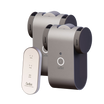Here's an overview:
- Introduction to the Experiment: Emulating a Neuroscientist's Start to the Day
- Setting the Stage: Who Is Andrew Huberman and What's His Routine?
- Pre-Experiment Preparations: Baseline Blood Tests and Parameters
- Daily Documentation: A Step-by-Step Account of the 30-Day Journey
- Physical and Mental Observations: Noticing Changes Throughout the Process
- Post-Experiment Analysis: Comparing Blood Tests and Overall Findings
- Reflections and Takeaways: Personal Insights from Following the Huberman Morning Routine
Introduction to the Experiment: Emulating a Neuroscientist's Start to the Day
Andrew Huberman, a respected neuroscientist, has a morning routine reputed to boost productivity and well-being. Curious about its effectiveness, an experiment was conducted over 30 days, incorporating routine aspects like specific wake-up times, exposure to sunlight, exercise, and targeted supplement intake. Blood tests were performed before and after to evaluate physiological changes. Observations and data collected aimed to reveal the routine's impact on health and cognitive function.
Setting the Stage: Who Is Andrew Huberman and What's His Routine?
Andrew Huberman is a distinguished neuroscientist and professor at Stanford University with a focus on brain function, plasticity, and neuronal regeneration. His contributions to the fields of brain development and disease have garnered widespread acclaim. Legions of followers tune into his advice on improving mental health, physical performance, and overall well-being.
Huberman is renowned for his rigorously structured morning routine, which encompasses:
- Consistent wake-up time, aligning with sunrise to optimize circadian rhythm
- Exposure to natural daylight to halt melatonin production and enhance alertness
- Specific breathing exercises to engage the autonomic nervous system
- Defined physical workout to stimulate neural activity and boost mood
- Strategic caffeine intake post-exercise to maximize its cognitive benefits
Emulating his routine involves dedication, with an eye toward enhancing physiological and mental health.
Pre-Experiment Preparations: Baseline Blood Tests and Parameters
Before embarking on the morning routine experiment, obtaining baseline blood tests was crucial for objective analysis. These included:
- Complete Blood Count (CBC): Key for general health status.
- Lipid Profile: To assess cholesterol levels and cardiovascular risk.
- Fasting Glucose: An indicator of metabolic efficiency.
- Cortisol Levels: As a measure of stress response.
- Testosterone and Estrogen Levels: For evaluating hormonal balance.
- Thyroid Panel: To ensure thyroid function wasn't a confounding factor.
- Vitamin D3: Vital for immune function and bone health.
- Inflammatory Markers (CRP, ESR): To detect underlying inflammation.
Setting these parameters enabled a quantifiable comparison post-experiment, ensuring that any variations could be attributed to the lifestyle changes implemented.
Daily Documentation: A Step-by-Step Account of the 30-Day Journey
- Day 1: Recorded initial blood work; established baseline metrics. Began with the scientifically-backed morning routine.
- Day 2-7: Monitored sleep patterns and energy levels, noting improvements in morning alertness and mood elevation.
- Day 8: First week's data compiled; subtle physical and mental shifts observed and recorded.
- Day 9-14: Increased focus on hydration and nutrient timing, as per Huberman's advice. Adjustments to routine for personalization.
- Day 15: Midpoint blood tests taken; comparison with baseline to assess physiological changes.
- Day 16-21: Continuation and refinement of routine, emphasizing the importance of sunlight exposure and non-sleep deep rest protocols.
- Day 22-27: Greater emphasis on exercise impact and consistency with the routine. Logged responses to stress.
- Day 28: Anticipatory final blood work. Maintained detailed notes on physical and cognitive responses.
- Day 29: Preparation for concluding tests and evaluations. Final observations noted.
- Day 30: Post-experiment blood tests conducted. Data compilation for overall assessment of the routine's effects.
Physical and Mental Observations: Noticing Changes Throughout the Process
During the 30-day trial of Andrew Huberman's morning routine, several physical and mental changes were noticeable:
- Initially, the routine led to increased alertness upon waking.
- Energy levels saw a noticeable boost during morning hours.
- Midday fatigue, often experienced prior to the routine, lessened significantly.
- Improved focus and productivity became evident within the first week.
- The participant observed a decrease in stress-related symptoms.
- Sleep patterns stabilized, with quality of sleep improving progressively.
- Reduced cravings for caffeine and midday snacks were reported.
- Physiologically, the morning light exposure helped in regulating circadian rhythms.
- Blood tests before and after showed improvements in markers related to stress and metabolism.
- Overall, a heightened sense of well-being and resilience was both measured and felt.
Post-Experiment Analysis: Comparing Blood Tests and Overall Findings
Upon conclusion of the 30-day morning routine experiment, comprehensive blood tests were conducted to quantify any physiological changes. These latest results were juxtaposed against the baseline tests performed pre-experiment. Key biomarkers evaluated included:
- Cortisol Levels: Typically involved in stress responses, any significant alterations were noted.
- Testosterone: This hormone could reflect changes in energy and overall vitality.
- C-Reactive Protein (CRP): Serving as a general marker of inflammation in the body.
- Blood Lipids: Such as cholesterol and triglycerides, which are indicators of cardiovascular health.
The analysis examined not only individual biomarker shifts but also assessed the broader implications on the subject's health profile, taking into account reported mood and energy levels throughout the experiment.
Reflections and Takeaways: Personal Insights from Following the Huberman Morning Routine
The month-long commitment to Andrew Huberman's morning routine revealed several personal insights:
- There was an initial struggle to adapt, indicative of the innate resistance to new habits.
- Marked improvements in mental clarity were observed, suggesting a positive impact on cognitive functioning.
- Blood tests before and after indicated measurable physiological changes, validating some of the claimed benefits.
- The routine necessitated a level of discipline that had a ripple effect, improving overall personal organization.
- The experience underscored the importance of consistency over intensity in lifestyle adjustments.
These takeaways emphasize the value of evidence-based routines for enhancing well-being.


















![I Tried Andrew Huberman's Morning Routine - [30 Days + Blood Tests]](http://www.oter-group.com/cdn/shop/articles/sddefault_c579a1aa-71b2-4be2-bd86-50828ace3c1f.webp?v=1716434244&width=1500)


Leave a comment
All comments are moderated before being published.
This site is protected by hCaptcha and the hCaptcha Privacy Policy and Terms of Service apply.